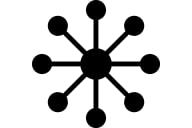You have /5 articles left.
Sign up for a free account or log in.
Colorado College has everything one would expect at a traditional liberal arts college: small classes, prestigious faculty, high-achieving peers, a beautiful campus and an innovative curriculum with majors in the humanities, arts and sciences. Unlike most colleges, but true to the liberal arts tradition, Colorado College doesn't offer a major in business.
But it now offers one in education.
That a college would add an education major is not necessarily noteworthy. In the past few decades, numerous small colleges that once exclusively offered majors in traditional liberal arts disciplines have added professional and vocational programs in the face of decreased student demand and increased competition from public universities. And some liberal arts colleges, including Colorado College, have programs that allow students to train for teacher certification while studying traditional disciplines.
But the new major is somewhat odd for Colorado College, which does not face many of the same kinds of immediate pressures as many other institutions. The college does not appear to be in danger of declining enrollments. It saw the number of applicants grow from 4,941 in 2009 to 5,606 last year, and its yield rate grow from 32 percent to 39 percent. The college still attracts a large number of students who can and will pay the full price of tuition. Administrators are also quite content with the size of the institution and are not looking to grow enrollment.
Instead, Colorado College faculty members say the creation of the education major reflects a demand among their students – many of whom are interested in education but not teaching – to prepare for potential careers. “A few years ago we conducted a survey and found out that so many of our students were going into education that we as department wanted to look beyond the classroom,” said Manya Whitaker, an assistant professor in the education department.
The creation of the major shows that even financially secure institutions like Colorado College are not immune from a growing call by students, parents and policymakers to create a better connection between what happens in the classroom and potential careers. From career services to internships to new programs, even elite institutions are signaling that career preparation is a key component of their mission.
But the new program, and the way Colorado College officials are talking about it, is also reflective of a shift in the way liberal arts colleges sell themselves. Amid much hand-wringing about what the future holds for such institutions (including numerous books, columns and conferences), some leaders have begun to formulate a different argument.
“The traditional folks focus on the disciplinary approach, but I think we’re past that,” said Vicki L. Baker, an associate professor of management at Albion College who has studied the changing nature of liberal arts colleges. “It’s becoming less about discipline and more about the process and structure of the liberal arts education.”
That type of thinking says the particular curriculum is less relevant than the type of work students do on campus and how their interactions on campus are structured. With that mindset, it makes sense for Colorado to offer an education major, or Swarthmore to offer engineering, or Franklin & Marshall College to offer business, as long as the curriculum focuses on critical thinking and research, spans a range of disciplines and is offered in a small, intimate setting.
Education as a Liberal Art
Colorado College already offers a master of arts in teaching, as well as an education minor for students who want to pursue teaching. Education department faculty members said they have been trying for several years to bring an undergraduate education major to the college in the face of a changing understanding about education’s role in society.
“My colleagues and I agreed that one of the major problems for people involved in education, not just teachers, but those with direct involvement such as policymakers and school board members, is that many people don’t really know much about what education means,” said Mike Taber, chair of the education department. “One of the reasons we struggle as a country is that people don’t get it, they don’t understand what education means as a discipline – how people learn, situational, place-based, context-based learning.”
Colorado College regularly sends a large number of students into education programs, particularly Teach for America. But Taber and Whitaker said many Colorado students expressed interest in careers in education beyond the classroom, whether in policy, advocacy or administration, and didn’t see a clear way to focus their interest in education until the major.
Colorado College faculty members said their new education program is designed to fit within the general parameters of the college’s liberal arts tradition rather than serve as a teacher-training program. “Through social inquiry, critical analysis, and community engagement, education majors will examine the central position educational systems occupy in civic functioning,” the rationale for the major states. Students in the major will still be required to meet general education requirements. Those interested in teaching after graduation will still be required to complete a separate teaching certificate.
Taber said that ideally, students majoring in education would also concentrate in a second area. To help foster that, Taber said, the department requires fewer courses than do most other majors.
Because the program is not designed to create classroom instructors, few of the courses for the major focus on pedagogical issues. Instead, the bulk of the major is made up of courses like “Educational Psychology,” “Policy and Politics in American Education,” “Globalization in Education” and “Educational Research Design.” Taber said the decision to hire Whitaker, whose background is in developmental psychology rather than education, was a key component of creating the major.
Decline of the Disciplines
In an article published in September, Baker and her co-authors revisited a 1990 study by David Breneman that found that only 212 institutions met his criteria for being considered “liberal arts colleges.” To meet the criteria, institutions had to award the majority or a significant minority of their undergraduate degrees in traditional arts and sciences disciplines and not award many graduate degrees.
When they looked at the educational landscape in 2012, Baker and her co-authors found that only 130 institutions still qualified as “true liberal arts colleges.” Few of Breneman’s original 212 institutions closed. Most simply expanded their missions and added more professional and graduate programs. Even the institutions most commonly thought to typify the “ideal liberal arts college” have majors that fall outside those parameters, particularly interdisciplinary programs such as international relations or environmental science.
“Given our research findings and the questions concerning the status of liberal arts colleges that remain unanswered, we hypothesize that there may no longer be one dominant model of liberal arts college education,” Baker and her co-authors wrote. “Instead, we may be seeing the emergence of multiple ways to achieve a liberal arts college education that are driven by a variety of factors, both external and internal to this sector of higher education. As this evolution continues, an obscured liberal arts college identity may become problematic for prospective students, recruiters, and educators.”
Colorado College faculty members said the decision to add the education major does not conflict with the college's liberal arts identity. "At its core, this is a major about research," Taber said. "How do you do research, how does that translate to reform and social policy, and where does that intersect with social factors." Taber said a few faculty members have voiced concern, but the majority have been supportive.
Roger G. Baldwin, a professor of education at Michigan State and one of Baker’s co-authors, said he and others are seeing a pattern where liberal arts institutions, responding to marketplace, student and parent pressure, try to make a more direct connection between the classroom and postgraduate careers. “That way, an institution can communicate more effectively with prospective students about the vocational connections and the vocational potential of what you would study at this institution.”
Multiple surveys and studies have found that students and parents are increasingly considering postgraduate employment possibilities as the cost of a degree increases and concern grows about student loan debt.
In a recent survey of parents for Inside Higher Ed by Gallup, only 28 percent of respondents said they strongly agreed that a liberal arts education could lead their child to a good job.
The New Liberal Arts
As traditional liberal arts colleges continue to add programs outside the traditional disciplines, they have sparked a debate about how they should be defining themselves.
Baldwin said he has seen a new argument come out of that debate. “It seems to me that they have made this kind of semantic shift in how they talk about what their institutions do,” Baldwin said. Instead of focusing on curriculum, he noted, liberal arts colleges have begun to focus on the structure of the institution as their defining characteristic.
Bill Spellman, director of the Council of Public Liberal Arts Colleges, wrote In 2009 that “a quality liberal arts education is about small class size, close faculty-student interaction, an innovative and interdisciplinary common core in the arts and sciences, undergraduate research experiences, senior capstone projects, service learning and community engagement, and a rich and diverse co-curricular life.” None of those factors require or preclude specific majors.
Rebecca Chopp, president of Swarthmore College, has been at the forefront of this discussion. In several speeches she has given since early 2012, she has focused on three aspects of liberal arts colleges that will set it apart going forward: an emphasis on critical thinking, a cultivation of small intentional communities of diverse and ethical individuals, and a fostering of an emphasis on life beyond career. That shift might require less obedience to traditional disciplinary structure. Swarthmore recently received the largest gift in the college's history --$50 million -- to help develop the college's engineering program.
"We will have to stretch or make flexible our institutional structures and culture to match the forms of social and participatory learning, teaching, and knowledge creation that will dominate the 21st century," Chopp said in a speech to the Swarthmore faculty last year. "I have argued elsewhere that we might think of educational institutions more along the lines of the fluid, flexible, open-ended structures ... rather than the fixed silos of the bureaucratic industrial-like structures that dominated so much of the 20th-century academy."




